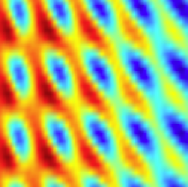Counting attosecond pulses: One, two, or many
The generation of attosecond light pulses has led to great advances in the field of ultrafast dynamics. So far, the attosecond pulses with the most desirable features consist of a single pulse, but the ability to generate pairs or trains of pulses with a well-determined relative phase would allow scientists to perform time-dependent measurements, such as transient absorption.
In Physical Review A, Giuseppe Sansone and colleagues at the Politecnico di Milano, Italy, in collaboration with researchers in Italy, Russia, and France describe a technique for producing single and double attosecond pulses, as well as pulse trains, with finely controlled relative amplitudes and phases. They do this by using few-cycle carrier-envelope phase stabilized pulses and by precisely controlling the polarization state of the driving pulse that generates the high harmonic field. In fact, the polarization state can both shape the characteristics of the attosecond pulses and act as a switch, or gate, for generating them.
This method for producing single, double, and multiple attosecond pulses could be applied to measuring ultrafast dynamics in a variety of media and, perhaps, electron wave-packet interferometry. – Frank Narducci





